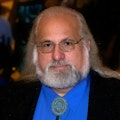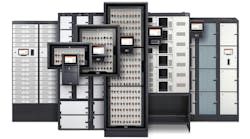A Platform Built for Both Colo and AI Density
The combined Evoque–Cyxtera platform entered the market with hundreds of megawatts of installed capacity and a clear runway for expansion. That scale positioned Centersquare to offer both traditional enterprise colocation and the higher-density, AI-ready footprints increasingly demanded through 2024 and 2025.
The addition of these ten facilities demonstrates that the consolidation strategy is gaining traction, giving the platform more owned capacity to densify and more regional optionality as AI deployment accelerates.
What’s in the $1 Billion Package — and Why It Matters
1) Lease-to-Own Conversions in Boston & Minneapolis
Centersquare’s decision to purchase two long-operated but previously leased sites in Boston and Minneapolis reduces long-term occupancy risk and gives the operator full capex control. Owning the buildings unlocks the ability to schedule power and cooling upgrades on Centersquare’s terms, accelerate retrofits for high-density AI aisles, deploy liquid-ready thermal topologies, and add incremental power blocks without navigating landlord approval cycles. This structural flexibility aligns directly with the platform’s “AI-era backbone” positioning.
2) Eight Additional Data Centers Across Six Metros
The acquisitions broaden scale in fast-rising secondary markets—Tulsa, Nashville, Raleigh—while deepening Centersquare’s presence in Dallas and expanding its Canadian footprint in Toronto and Montréal.
Dallas remains a core scaling hub, but Nashville and Raleigh are increasingly important for enterprises modernizing their stacks and deploying regional AI workloads at lower cost and with faster timelines than congested Tier-1 corridors. Tulsa provides a network-adjacent, cost-efficient option for disaster recovery, edge aggregation, and latency-tolerant compute.
In Canada, Toronto and Montréal offer strong enterprise demand, attractive economics, and grid advantages—including Québec’s hydro-powered, low-carbon energy mix—that position them well for AI training spillover and inference workloads requiring reliable, competitively priced power.
3) Self-Funded With Cash on Hand
In the current rate environment, funding the entire $1 billion package with cash on hand signals balance-sheet strength and execution speed. For sellers, certainty and fast closing matter. For Centersquare, buying operating assets across multiple metros provides immediately usable capacity, a far faster route to market than greenfield development—especially in Tier-1 regions where power-ready rooms are scarce.
4) AI Demand Is Moving Beyond Hyperscalers
While hyperscale “AI factories” continue to dominate headlines, downstream enterprise adoption is accelerating. Organizations need secure, network-rich colocation with 70–150 kW per rack, liquid-assisted cooling options, and room for density upgrades. Centersquare is explicitly positioning this expanded footprint to support the next wave of enterprise and regional AI workloads.
Benefits of the Expansion
The Evoque–Cyxtera heritage provides Centersquare with a deep, carrier-dense network fabric, which the company can now extend across its enlarged portfolio. Post-transaction, customers should expect more standardized cross-connect pricing, expanded peering ecosystems, and selective metro-edge POPs that tighten latency paths into cloud on-ramps.
Markets like Raleigh, Nashville, and Tulsa are poised to become “AI landing zones” for enterprises priced out of Tier-1 GPU deployments—provided Centersquare can rapidly validate heat-rejection capacity and deliver scalable liquid-assisted thermal options. In Canada, Montréal remains particularly well-positioned for inference and fine-tuning workloads thanks to grid incentives and lower-carbon energy.
The ability to deploy regional AI factory capabilities quickly across these metros will make Centersquare an attractive partner for enterprises building local AI infrastructure.
Governance, Capital, and Sponsorship
Brookfield Infrastructure—responsible for stitching the platform together—remains a critical sponsor. Centersquare’s ability to execute a self-funded ten-asset transaction underscores the financial backing and operational discipline Brookfield brings. The rebrand and leadership consolidation under CEO Spencer Mullee were designed to give customers a unified operating experience and consistent service standards across legacy fleets.
A Note on Name Confusion
Those researching Centersquare may encounter CenterSquare Investment Management, a real estate investment firm recently in the news for selling its stake in Aligned Data Centers. Despite the similar naming, CenterSquare Investment has no affiliation with Brookfield’s Centersquare colocation platform. The two entities operate in separate domains and should not be conflated.
Bottom Line
Centersquare’s $1 billion expansion reflects a pragmatic growth strategy: scale by acquiring what you already operate, unlock densification through ownership, and add immediately usable capacity in metros where enterprises are modernizing and AI demand is accelerating. Rather than a greenfield bet, this is a portfolio-level optimization designed to meet AI-era density and timeline expectations.
Backed by Brookfield and now stewarding an 80-facility estate, Centersquare is positioned to evolve into a leading platform for AI-ready colocation below the gigawatt hyperscale tier. If the company executes on its densification roadmap and regional expansion strategy, it stands to become one of the most consequential enterprise and AI-edge operators in North America over the next phase of demand growth.



